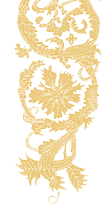19th Century Single Pedestal Dining Table
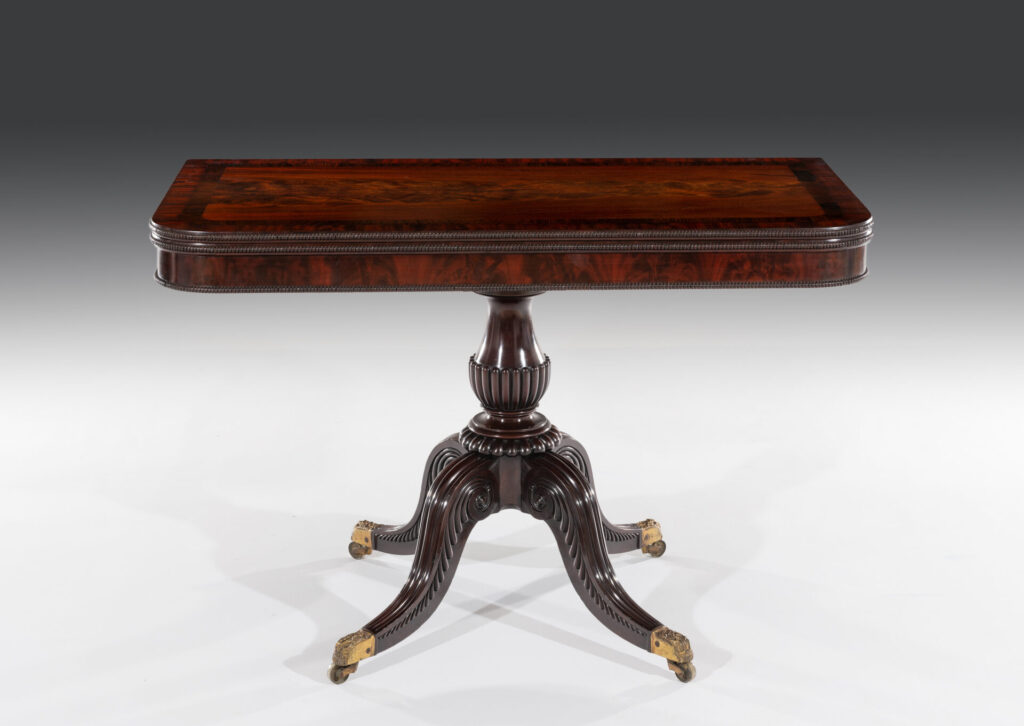
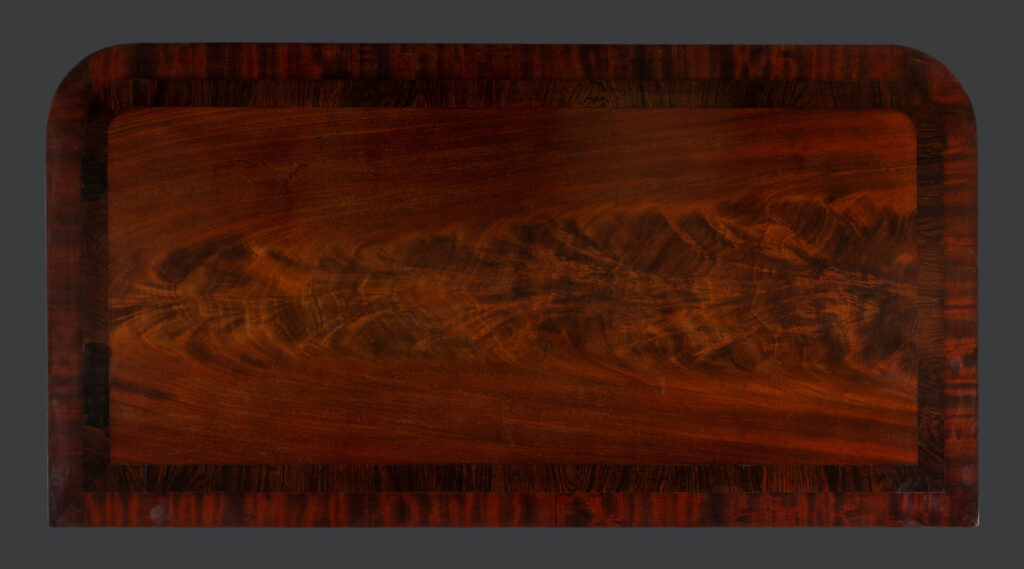
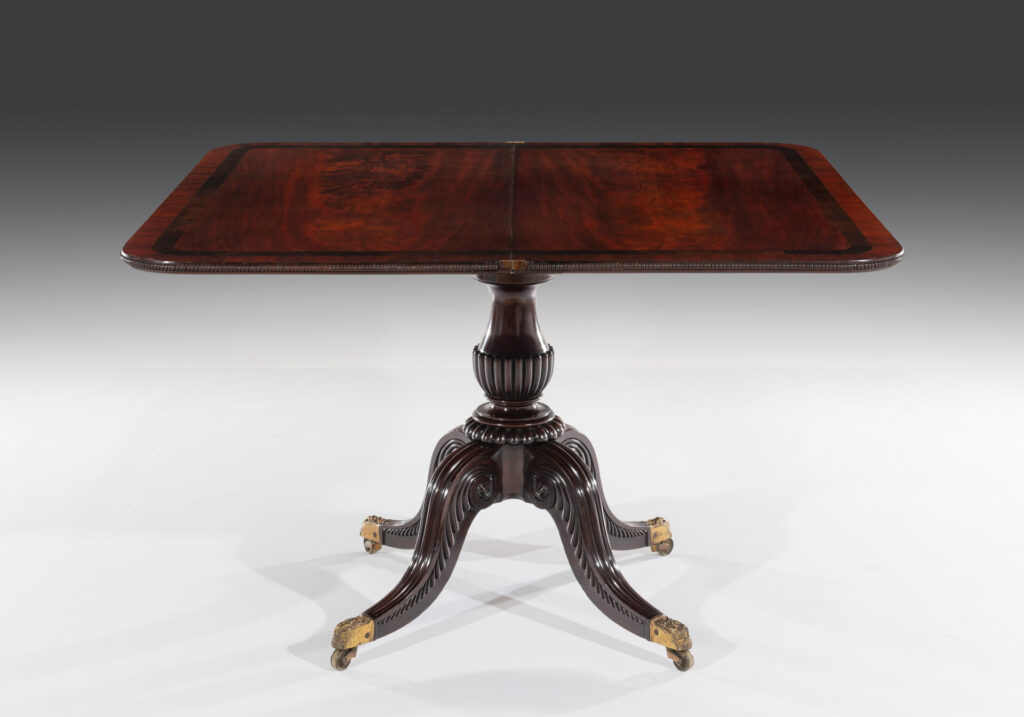
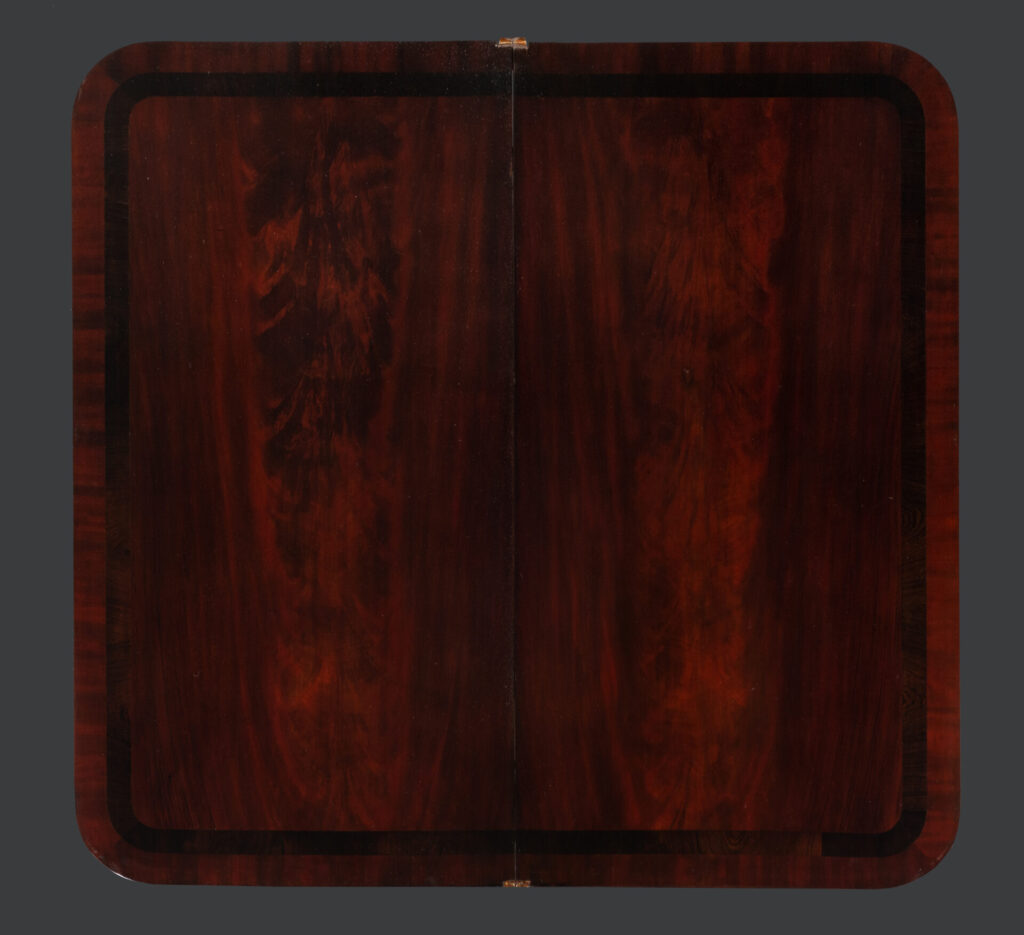
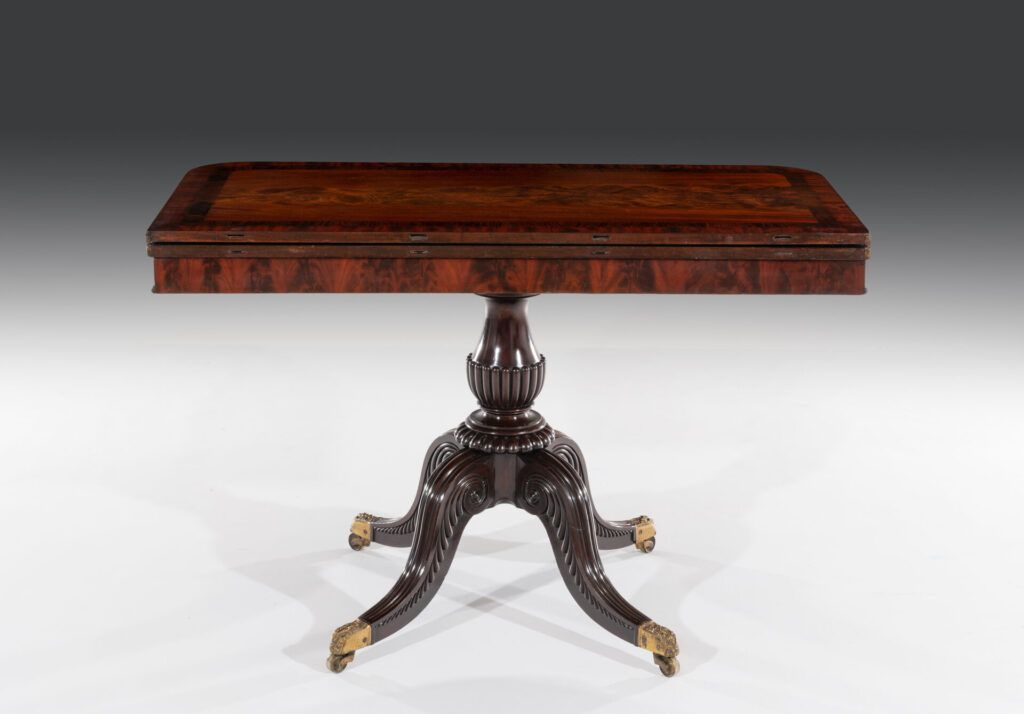
19th Century Single Pedestal Dining Table
Scottish
circa 1805 - 1815
Early Regency period flamed mahogany single pedestal dining/side table by William Trotter of Edinburgh.
A very fine mahogany veneered top is highly figured and crossbanded in rosewood. The tightly carved and gadrooned moulded edging sits above a shallow frieze. The table top opens and swivels to reveal matching book-matched veneers that have been crossbanded in rosewood and the table, when opened, will seat four diners comfortably. The shallow frieze, with vertical cut flamed mahogany veneers to all four sides, is decorated with a finely turned gadrooned moulding.
The oversized side table has almost certainly been designed to dine at occasionally and is raised on a trade mark 'Trotter' gadrooned pedestal base. The ring turned and knolled pedestal sits above four out-swept reeded and carved legs that terminate on the original gilt brass capped castors and toes.
The table is of the finest quality and has a natural high gloss finish to it. This finish is old and retains a good patina.
William Trotter of Ballindean JP DL (1772–1833) was a Scottish cabinet-maker who served as Lord Provost of Edinburgh from 1825 to 1827.
A highly respected maker of Regency furniture, he has been called Scotland's greatest cabinet-maker. He has a distinctive and recognisable style.
The Trotter family were part of the Edinburgh Merchant Company from 1691.
William was born in Edinburgh on 10 November 1772 the son of Thomas Trotter (1724-1804) and his wife, Charlotte Knox.
Sometime in the 1740s his father had gone into partnership with Robert Young to create the furniture company of ‘Young & Trotter’. In 1796 a further partner was added and it was renamed ‘Young, Trotter & Hamilton.
The family home until 1797 was on Gosford Close on Edinburgh's Royal Mile. They then moved to 23 George Street: a new house in Edinburgh's First New Town.
In 1810 he was living and trading in the small section of houses on the south side of Princes Street at its east end (later rebuilt as the North British Hotel). These had previously been the premises of ‘Young & Trotter’. He is then described as a cabinet-maker, upholsterer and undertaker.
In 1820 he bought the Ballindean estate in Perthshire from Sir David Wedderburn, 1st Baronet at a cost of £67,000. It lies midway between Perth and Dundee.
In 1825 William succeeded Alexander Henderson of Press as Lord Provost. The most notable decision as Lord Provost was agreeing the layout of the Grindlay estate in south-west Edinburgh: Castle Terrace, Lothian Road (north), Cambridge Street, Spittal Street and Grindlay Street.
In July 1825 he was commissioned to provide furniture for the Chinese Room at the newly completed Kinfauns Castle, a neighbour to the Ballindean estate. The furniture was ready for the castle's first occupation by Francis, 14th Lord Gray in 1826.
In 1830 he added the estate of South Ballo to the Ballindean estate and in 1832 he rebuilt Ballindean House (originally built in 1711 and owned by the Trotters since 1741 to his own specification. The architect was Thomas Hamilton, thought to be a cousin of Hamilton his business partner. The house includes a very large ballroom. The old house was downgraded to estate offices and demolished in 1962.
His final shop was at 9 Princes Street. It had a substantial warehouse attached to its rear.
He died at home, 13 Abercromby Place in Edinburgh's Second New Town on 16 August 1833. He is buried in Greyfriars Kirkyard. The grave lies in the extreme north-east corner of the western extension.
Both Ballindean and Abercromby Place survive and both are listed buildings. His shop and warehouse on Princes Street were redeveloped to create the North British Hotel, now called the Balmoral Hotel.
Trotter had a very distinctive style that he used constantly on his furniture, such as the quilling on the sides of his dining tables or the fine beading he used on his drawer fronts, and the quality of timber he used to execute his furniture. Like other cabinet makers of the day, he was influenced by what was going on outside of Edinburgh with the London styles and classical revivals that occurred at this time.
You could describe some of the techniques Trotter used as ‘thrift worthy’, for example on a sofa table there was what appeared to be ormolu mounting framing the drawers and the panels at each end. But on close inspection, during the repair on one of the tables, it was found that it was in fact lead which had been cut to size and then painted on with gilding before it was applied to the piece of furniture. The economics of it were that he could cut this metal to any shape and gild it before applying it, thus saving a lot of money in the 1810-1820.
William Trotter’s most famous commissions were the Paxton House contract in 1814 for John Holme Robertson MP and the other for the Signet Library which was circa 1822.
Condition
Excellent
Dimensions
Height 76.00cm (29.92 inches)
Width 114.00cm (44.88 inches)
Depth 56.50cm (22.24 inches)
Stock No: 11438
Sold
